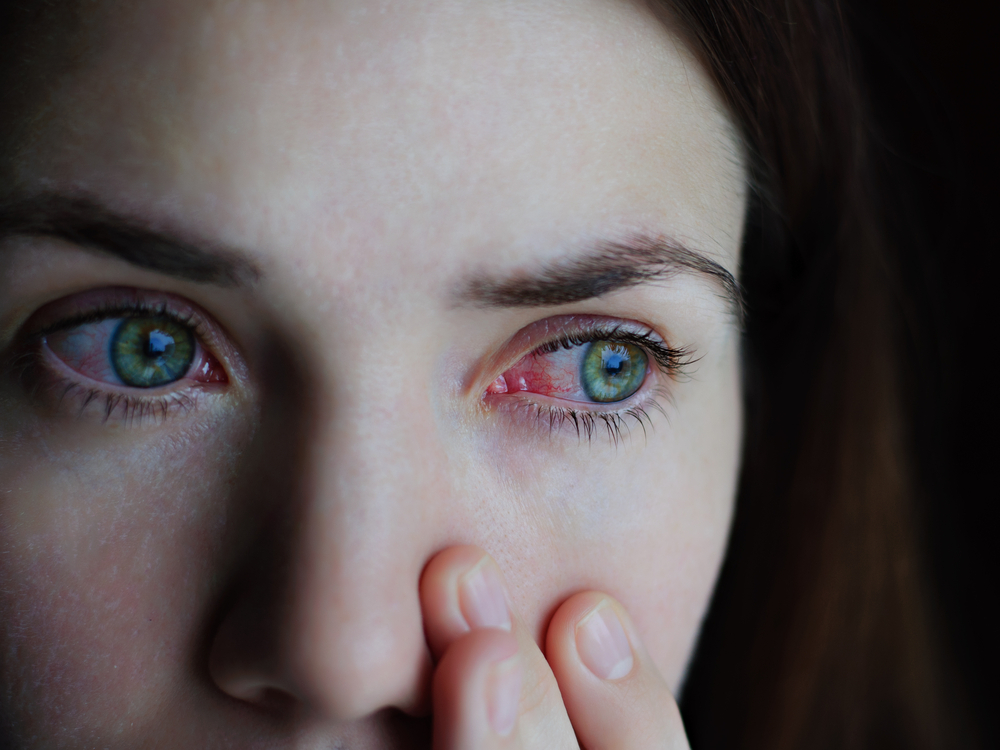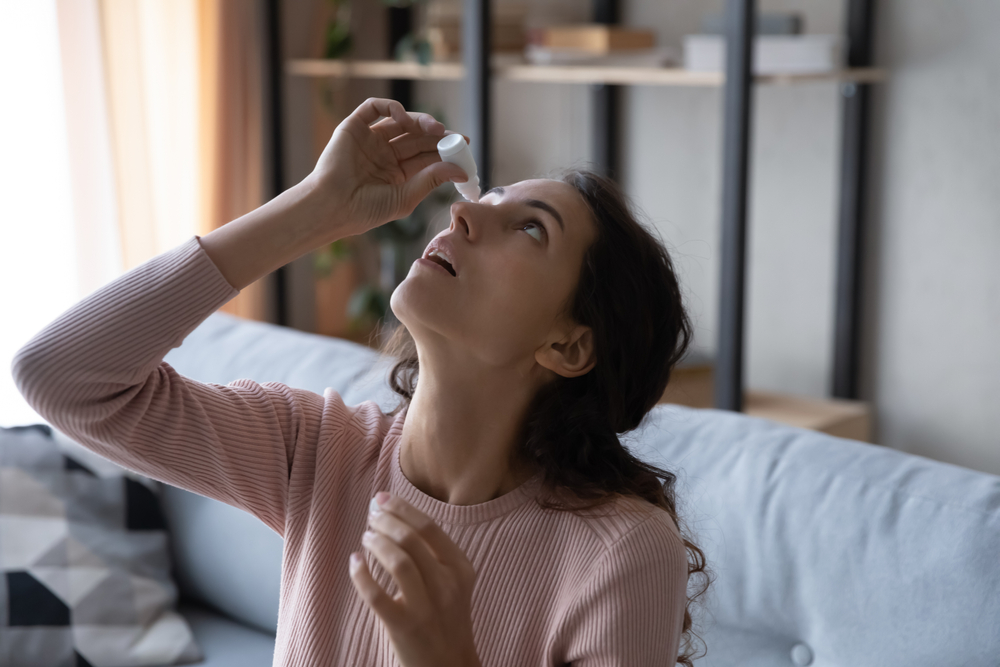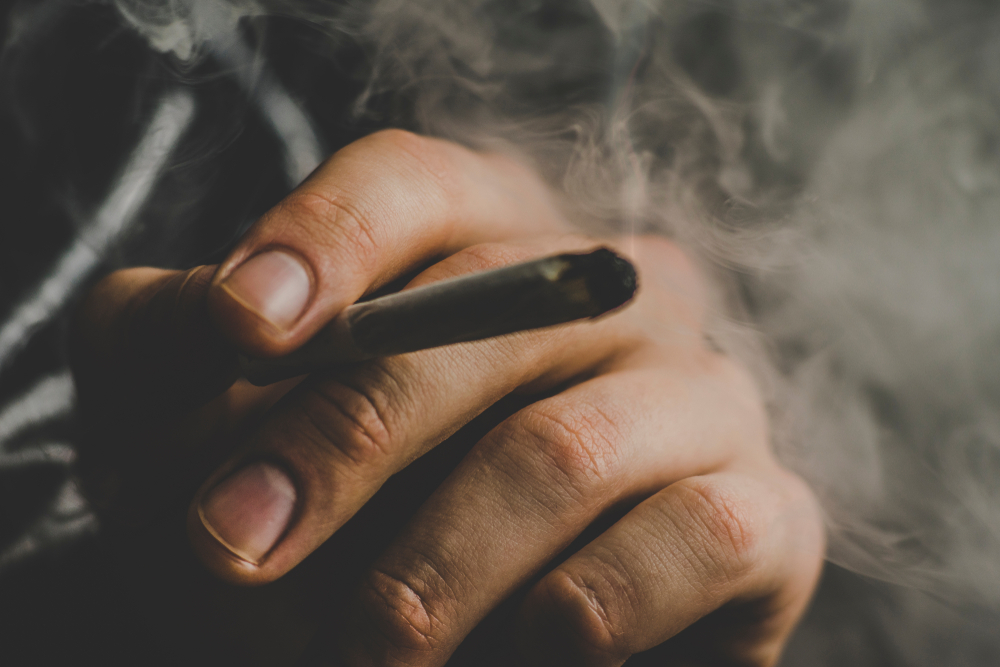Wednesday May 10, 2023
By Trevor Ross
 Education,Health/Science
Education,Health/Science
Red eyes are a common, but pesky, side effect of cannabis use. For many years consumers turned to the obvious solution of eye drops, particularly redness-reducing eye drops. But as more people use cannabis, and more people use these eye drops, more people are also reporting chronic or even worsening redness. The cause is not cannabis but the eye drops themselves, as overuse leads to a syndrome called “rebound hyperemia.”
Hyperemia (or hyperaemia) is the increase in blood flow to a certain organ or region of the body, and is not inherently problematic. Perhaps the most common example of hyperemia occurs during or after exercise, as blood vessels widen to move more oxygen through the body. Another common example is inflammation around muscles or joints. But other kinds of hyperemia may be induced by pharmaceuticals including cannabis.
This article reviews the causes of rebound hyperemia in cannabis consumers, why cannabis turns our eyes red to begin with, and how to treat red eyes while minimizing the risk of rebound hyperemia.
Rebound Hyperemia and Cannabis
Cannabis causes redness in the eyes because the active ingredients, including THC, act as a vasodilator, relaxing and expanding blood vessels (vaso- from Latin, meaning “vessel;” and dilate, meaning to widen or further open). These expanded blood vessels then become starkly visible against the whites of our eyes. It is important to note that this redness is a normal physiological response to the cannabinoids in marijuana and can be brought about by any consumption method (smoking, vaping, or ingestion). That said, smoke in or around the eyes can also dry them out, causing additional redness, but this sort of irritation is easier to treat and is not the same as hyperemia.

Eye drops can relieve redness by a few different methods, primarily by hydrating and lubricating the eyes. But redness relief drops in particular contain active ingredients called vasoconstrictors. The opposite of vasodilators, vasoconstrictors are a class of medication that shrink or constrict blood vessels, reducing their size thus making them less visible.
But reducing blood flow also reduces the amount of oxygen and nutrients flowing through your eyes. In response, the eyes may feel starved of blood, and after the drug wears off, those blood vessels will dilate again in an attempt to correct the blood flow. This is called a rebound effect and results in chronic red-eye, leading many consumers into a perpetual cycle of treatment.
How to Treat and Resolve Rebound Hyperemia
If you or someone you know is experiencing rebound hyperemia, the first step is, unfortunately, to stop using redness reducing drops. The most common active ingredients to watch out for are tetrahydrozoline (Visine Redness Relief) and naphazoline (Clear Eyes Max Redness Relief). If your drops contain either of these ingredients, push them to the back of the medicine cabinet for a while, and consider some other types of drops. Generally speaking, there are three kinds of eye drops: redness relief, allergy relief, and artificial tears.
Redness relief drops, as we have seen, contain vasoconstrictors that offer quick relief, but carry a risk of dependence. Allergy relief drops contain antihistamines that reduce allergy symptoms like itchy, watery eyes. And artificial tears are sterile lubricants with electrolytes for eye health. All of these drops also contain necessary preservatives that may irritate some eyes, so a little trial and error may be required.

Artificial tears should be the standard, starting drops for any eye irritation. Dryness, dust, pollen, and other irritants are the most common causes of redness and can often be remedied by simply flushing the affected eye with a hydrating solution. Artificial tears will not constrict blood vessels enlarged by cannabis, but they can reduce redness from associated causes like smoke or dryness.
Some people also find relief by placing a cool compress or washcloth across the eyes. The principle is similar to putting an ice pack against a swollen muscle. Ice is far too cold to use safely on the eyes, but a cool compress should reduce the vascular swelling for temporary relief.
Symptoms of rebound hyperemia usually fade after a few days of not using vasoconstricting drops, though rare cases take longer.
Conclusion
While purely a cosmetic affliction (meaning there is no serious health risk associated with the condition), chronic red eyes can carry social stigmas of drug use, fatigue, or other illnesses that make socializing unnecessarily challenging. Fortunately, most cases of rebound hyperemia resolve themselves after a few days of abstaining from vasoconstricting drops.

If eyes do not clear up after a week, or you experience other symptoms including completely red eyes, only one red eye, swelling, pain, or changes in eyesight, consult an optometrist immediately, as these may be signs of infection or another condition.
If eyes do not clear up after a week, or you experience other symptoms including completely red eyes, only one red eye, swelling, pain, or changes in eyesight, consult an optometrist immediately, as these may be signs of infection or another condition.
How do you treat your red eyes? Tell us in the comments below!
FAQs
How long does rebound hyperemia last?
In most cases, rebound hyperemia only lasts a few days after stopping use of constricting eye drops. Rare cases last longer, but should still resolve themselves. If symptoms get worse or do not change after a week, consult an optometrist to make sure the condition is not caused by something more serious.
How do you treat rebound redness?
Rebound redness can be treated by stopping the use of any vasoconstricting drops (usually containing tetrahydrozoline or naphazoline). Redness will inevitably linger a few days as the blood vessels inside the eye readjust without the medication, but this redness can be treated with artificial tear drops and a cool compress over the eyes.
What is eye rebounding?
Rebounding, or the “rebound effect,” is when blood vessels respond to medicinally-induced constriction by forcefully expanding when the medicine is not present. The same phenomenon is also seen in nasal decongestants.
Why does Visine make my eyes redder?
Redness relief drops contain active ingredients called “vasoconstrictors” which shrink the appearance of unsightly veins in the eyes. However, constricting blood flow also means constricting oxygen and nutrients to the eyes. Therefore, prolonged or persistent use of these constricting drugs can force blood vessels to respond by expanding beyond their normal size when the drug is not present, leading to chronic red-eye and a cycle of treatment and response.

